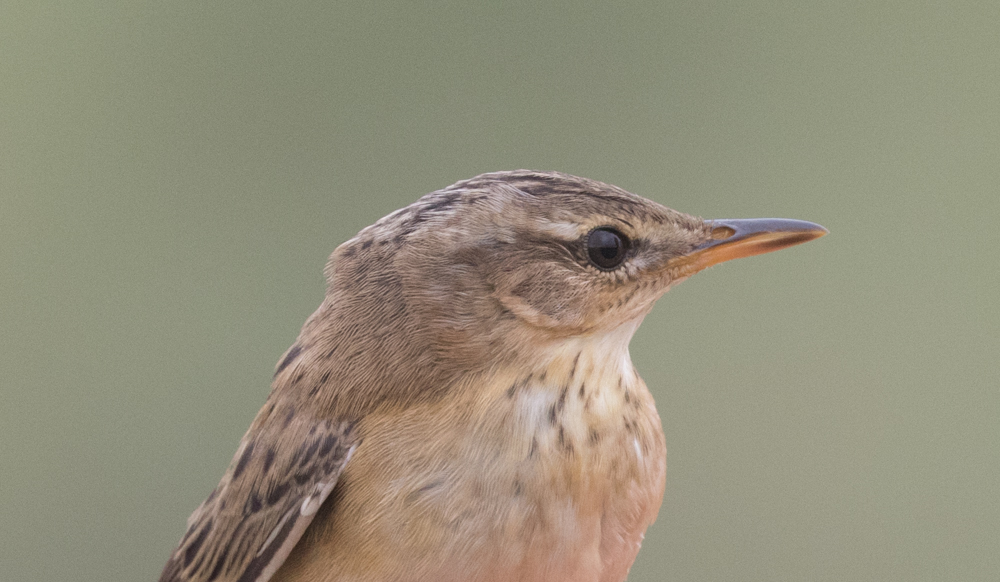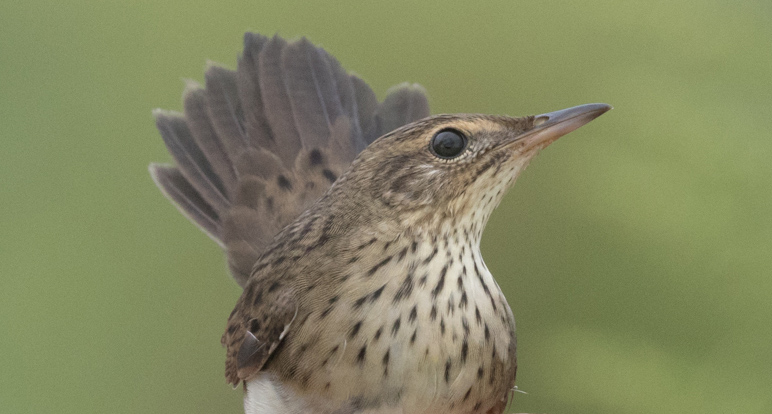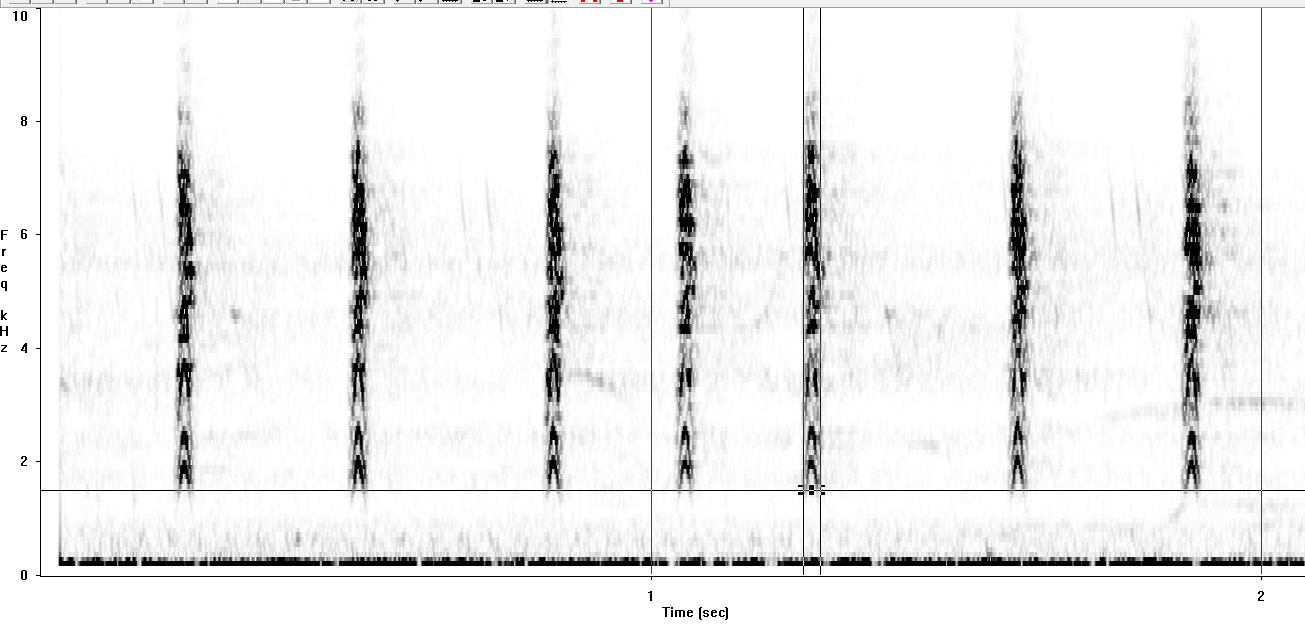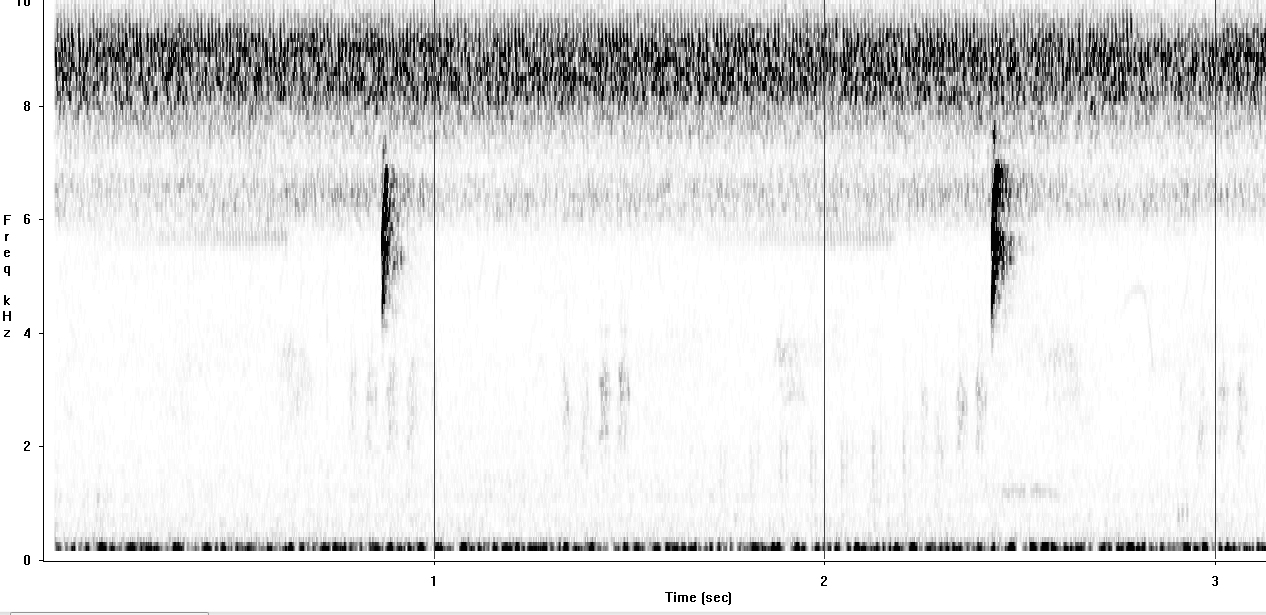Some notes of calls of Lanceolated Warbler (Locustella lanceolata) and Pallas´s Grasshopper Warbler (Locustella certhiola) --not yet finished!
Above: Juvenile Pallas´s Grasshopper Warbler in China September 2017. Streaks in breast are typical for juvenile birds.
Above: Juvenile Lanceolated Warbler in China September 2017. Buffish breast and neat strikes also typical for juvenile bird. During Winter 2017 and Autumn 2018 I had possibility to hear and record calls of two Asian Warbles. In Cambodia (December 2017) Lanceolated Warblers called and also sang often. Earlier I had experience of singing Pallas´s Grasshopper Warblers from Mongolia trips, but now in Shanghai also heard just calls of Pallas´s. Calls of Lanceolated Warbler are short, hard chuchu, fainter tack, metallic pit or chit (similar to Pallas´s Grasshopper Warbler, but quieter and slightly drier and squeakier), and harsh, scolding series of cheek-cheek notes (1). This latter calls is probably same described by Jännes (3) as somewhat nasal chet-chet-chet, which can be heard from migrants and birds on the wintering grounds. Calls of Pallas´s Grasshopper Warbler are ticking pit, dry clicking chat and dry rolling rattle trrrrrt; also abrupt, explosive dt dt dt in alarm. In book Reed and Bush Warblers (2) typical call is quiet, hard and rather metallic "pwit", uttered repeatedly at intervals of of one or two per second. This call can be heard throughout the year and is often the only indication of its presence during winter months. It is quite similar to the contact call of Lanceolated Warbler and care is required in their separation, but identification by call alone is possible once the observer is familiar with it. Here are some my own recordings of calls in Xeno-Canto: Call of Lanceolated Warbler Locustella lanceolata Cambodia September 2016 MP3 Call of Pallas´s Grasshopper Warbler Locustella certhiola Shanghai China September 2017 MP3 Song of Pallas´s Grasshopper Warbler Locustella certhiola from Mongolia June 2015 MP3 -Song of Pallas´s Grasshopper Warbler start s with two or three quiet but harsh "schrip" calls, similar to the typical calls (2).
Above: Sonogram 1. Call of Lanceolated Warbler (Locustella lanceolata) Cambodia December 2016. Structurally this call differs easily from Pallas´s Grasshopper Warbler. Call is repeated often and single note is like tower including several arrowheads. Scale is wide from 1170 to 8188 Hz and delta 7019 Hz. Duration of single note is 0.066 sec.
Above: Sonogram 2. Call of Pallas´s Grasshopper Warbler (Locustella certhiola) Shanghai China September 2017. Structure of single note (or call) is very simple without any arrowheads. Scale is from 3579 Hz to 6297 Hz and delta 3348 Hz. Duration of call is 0.04 sec. Dry rattle of Pallas´s Grasshopper Warbler is very typical for species. Pallas´s Grasshopper Warbler Locustella certhiola rattle Mongolia June 2015 MP3 Discussion: As mentioned above, typical calls of these two Asian species differ from each other. Structure is obviously different and easily separated in sonogram. The call of Pallas´s Grasshopper Warbler is described as sharp, thin and metallic pit (4), but Lanceolated has more nasal and repeated chet calls. The structure of call of Lanceolated is more complex having several harmonic layers giving typical tone. There is also variation in pitch giving hard sound. Call is also longer in duration. The structure of call of Pallas´is more simple and can be heard as simple call, having more power at the beginning of call. Call is also shorter in duration. I was familiar with song of Pallas´s Grasshopper Warbler and surpsisingly the song starts (as mentioned in litt) call like part. In European context, these calls can be separated easily in sonogram from each other. In practice these calls are also easily separated from each other in the field. J.Pirhonen December 2017 Litterature: 1. Brazil M: Birds of East Asia. Helm, 2009. 2. Kennerley P, Pearson D: Reed and Bush Warblers. Helm, 2010. 3. Jännes H: Calls of Eastern Vagrants. Jännes, 2002. 4. Rasmussen P C, Anderton J C: Birds of South Asia. The Ripley Guide. Vol. 2. Lynx, 2005. Sonograms presented here using SyrinxPC free software. |
Larus schistisagus Ohotanlokki Slaty-backed Gull second winter




